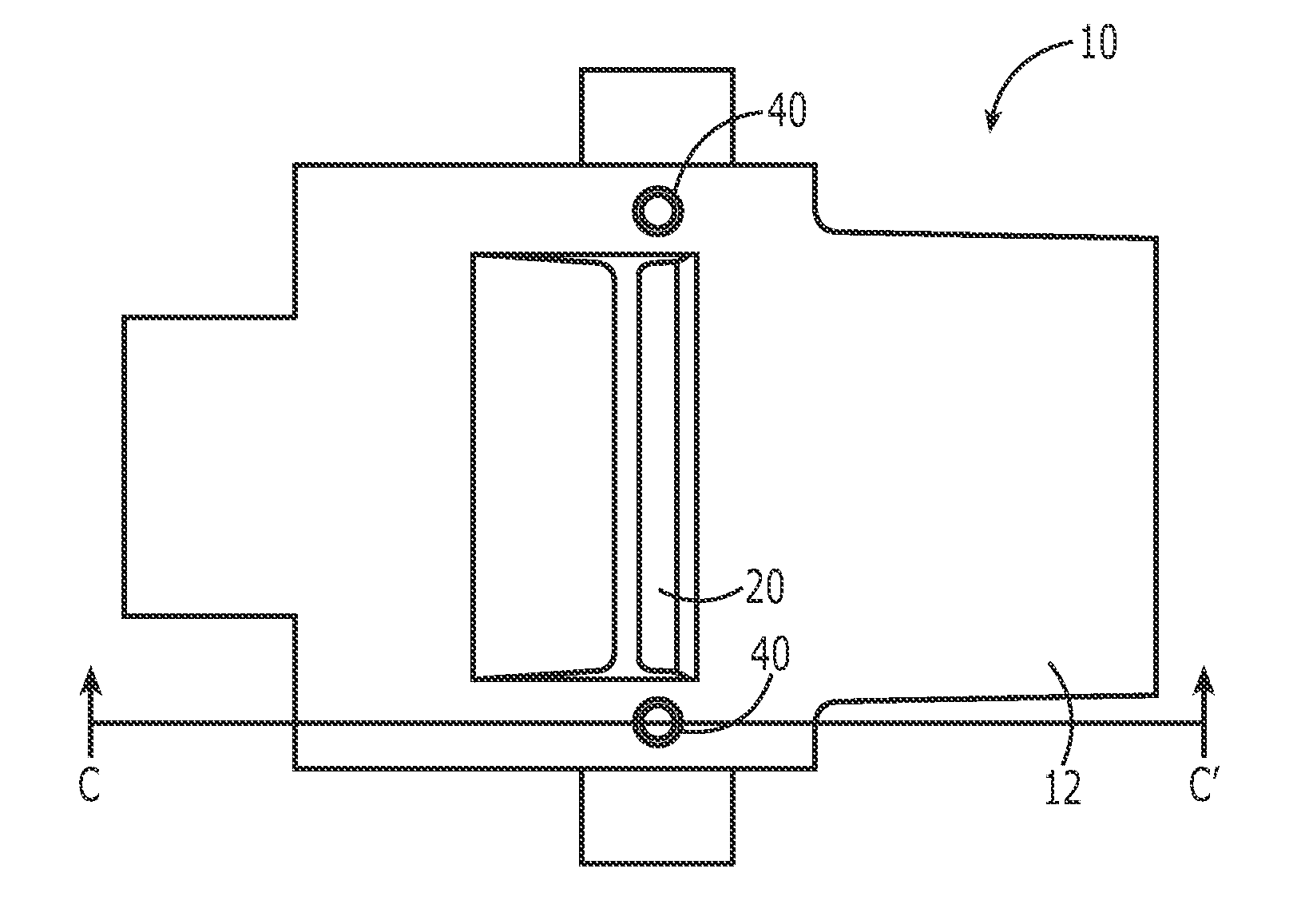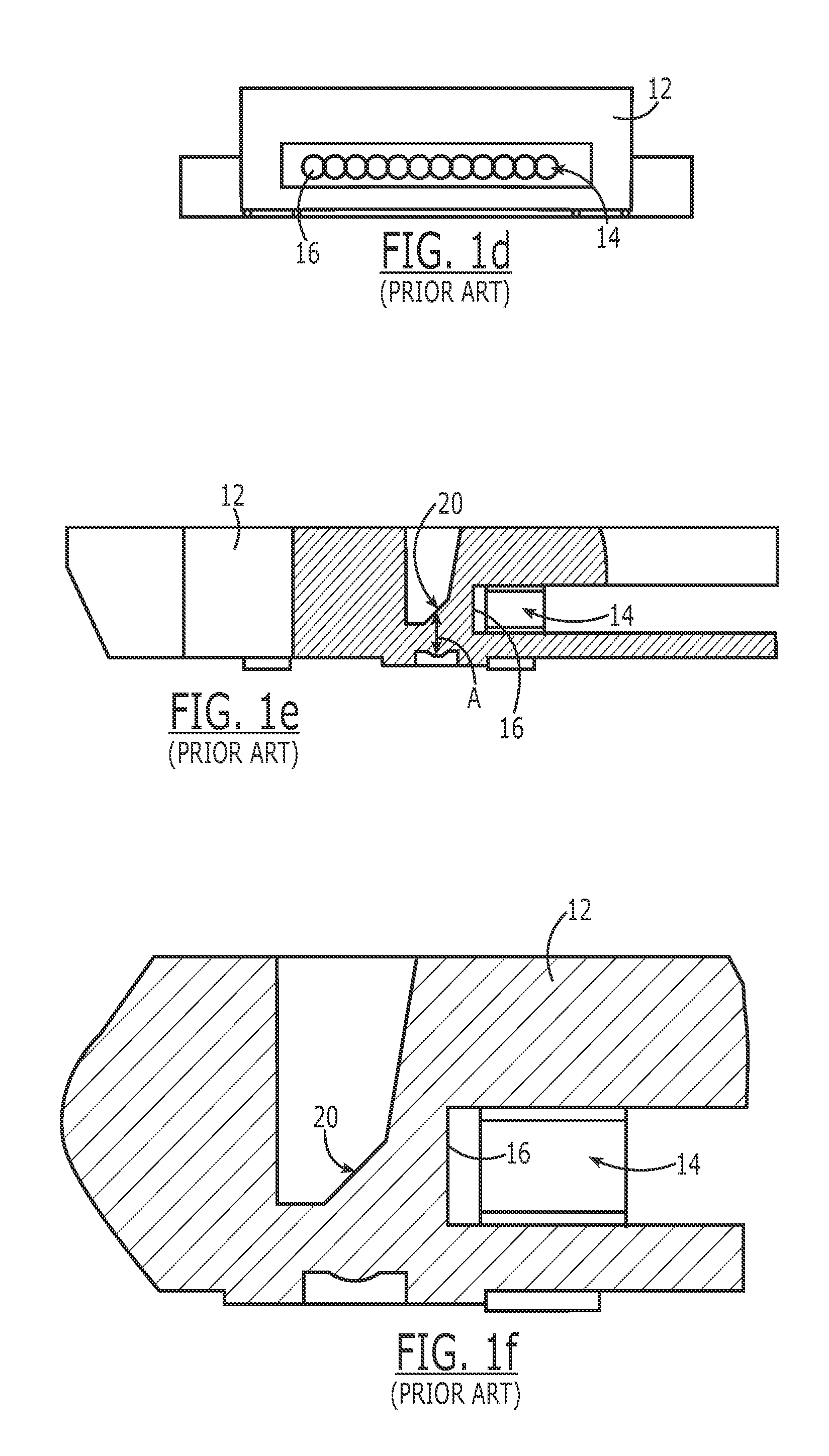Body having a dedicated lens for imaging an alignment feature
a technology of alignment feature and body, applied in the field of alignment of articles, can solve the problems of high cost, difficult alignment of devices such as these to optical fibers, and relatively complicated optical structures,
- Summary
- Abstract
- Description
- Claims
- Application Information
AI Technical Summary
Benefits of technology
Problems solved by technology
Method used
Image
Examples
Embodiment Construction
[0028]For illustrative purposes, the present invention is discussed below in the context of a lens body. As discussed above, FIGS. 1a-1f show an exemplary lens body 10 that has features in common with prior art lens bodies. The illustrated lens body 10 includes a body 12 that is exemplary of many prior art lens bodies in that it includes a bottom surface 26 for abutting a substrate supporting one or more OEDs (such as VCSELs), a port 14 for receiving one or more optical fibers for carrying light to or from the OEDs, a lens 24 corresponding to each OED for focusing light from the OEDs onto an interface surface 16 of the port 14 and into optical fibers abutting the interface surface 16 (or vice versa), and a reflective surface 20 for reflecting light transmitted between the OEDs and the optical fibers abutting the interface surface 16. As used here, “abutting” or “interfacing” means physically contacting in abutting relationship or nearly in physical contact, e.g., separated by a gap ...
PUM
 Login to View More
Login to View More Abstract
Description
Claims
Application Information
 Login to View More
Login to View More - R&D
- Intellectual Property
- Life Sciences
- Materials
- Tech Scout
- Unparalleled Data Quality
- Higher Quality Content
- 60% Fewer Hallucinations
Browse by: Latest US Patents, China's latest patents, Technical Efficacy Thesaurus, Application Domain, Technology Topic, Popular Technical Reports.
© 2025 PatSnap. All rights reserved.Legal|Privacy policy|Modern Slavery Act Transparency Statement|Sitemap|About US| Contact US: help@patsnap.com



